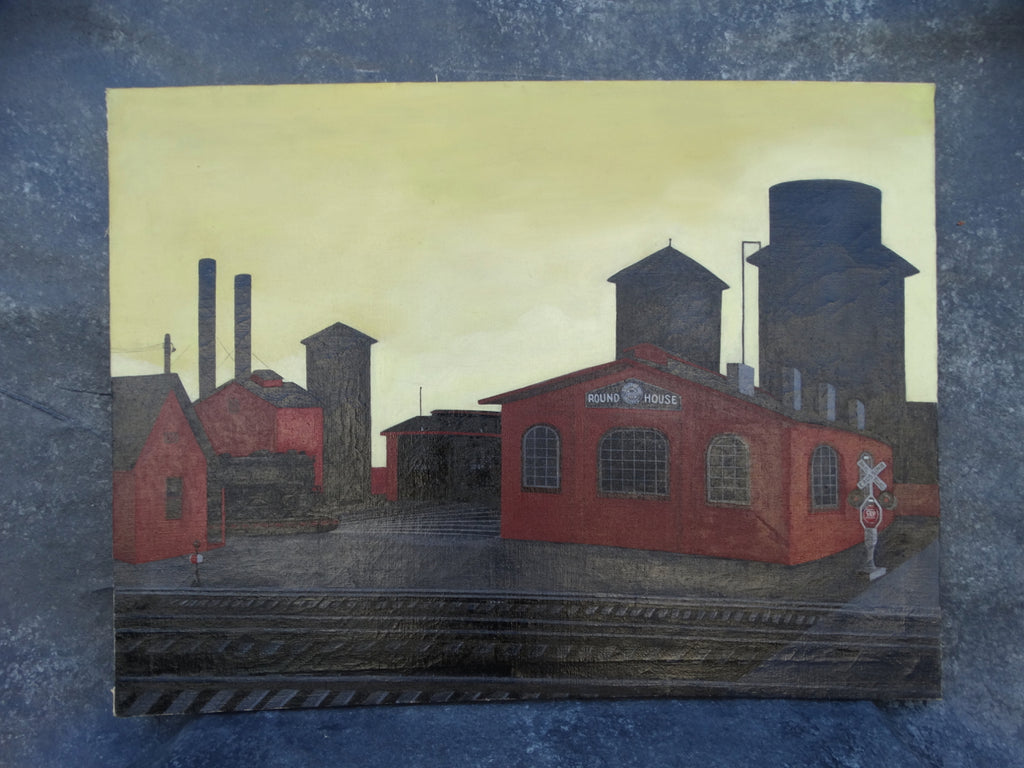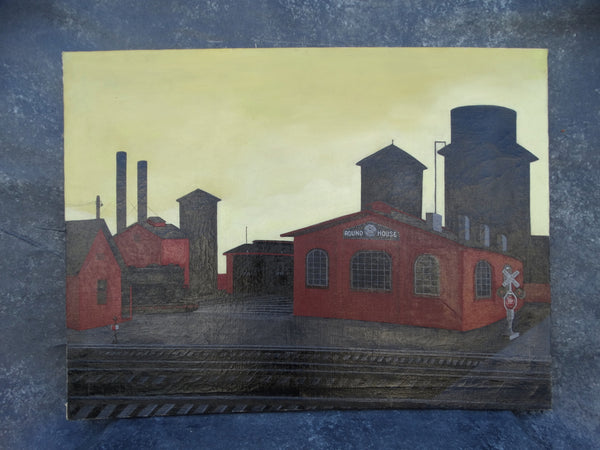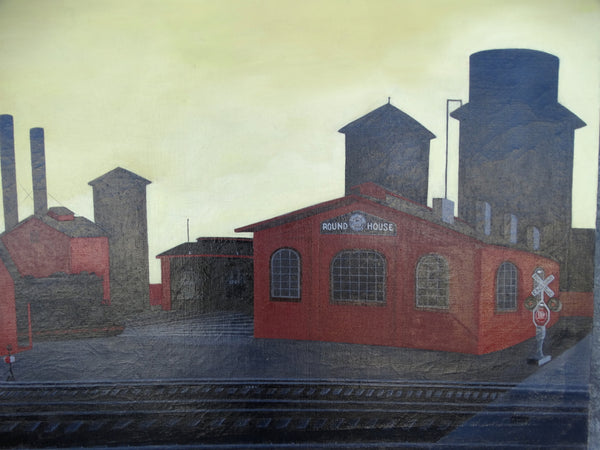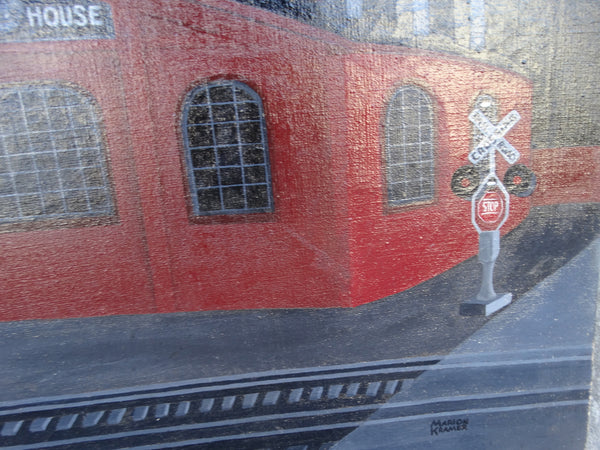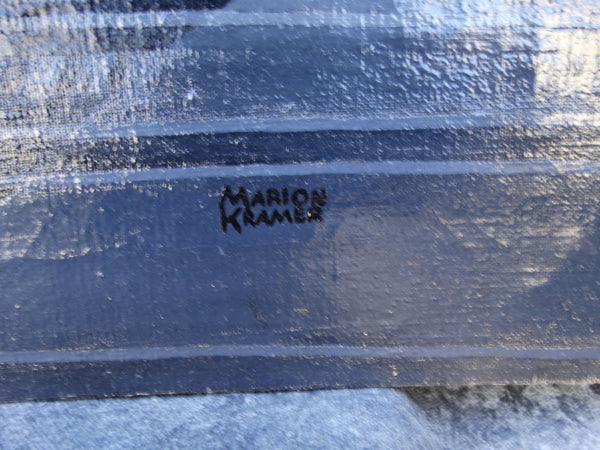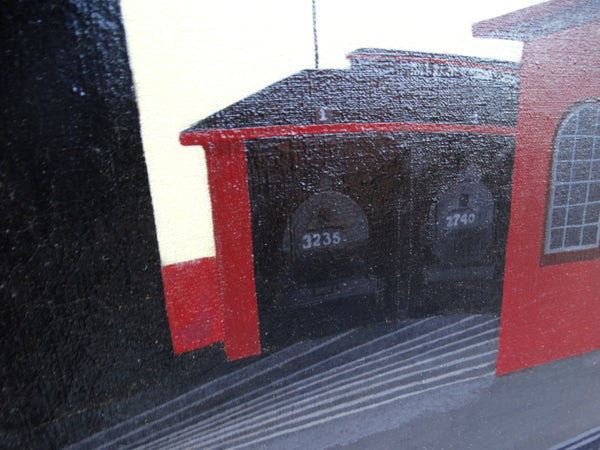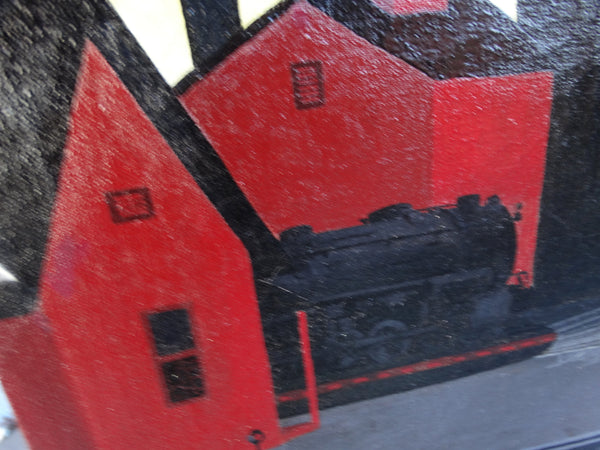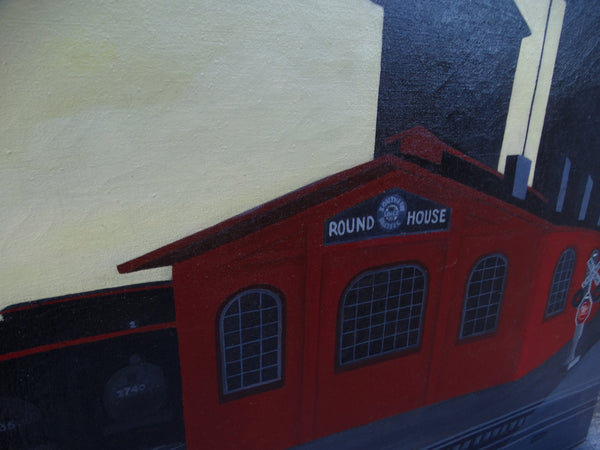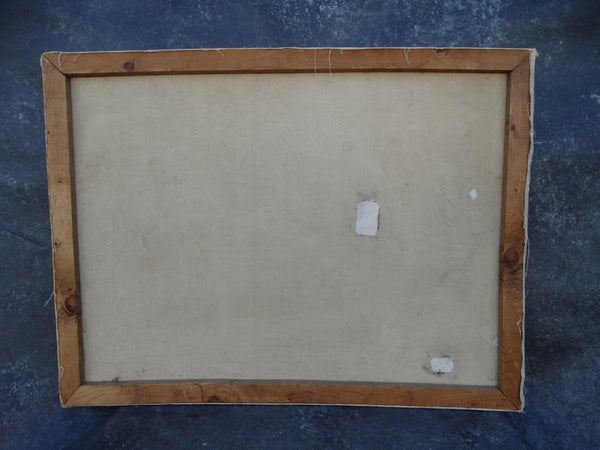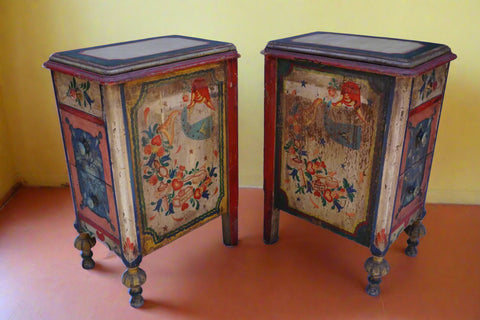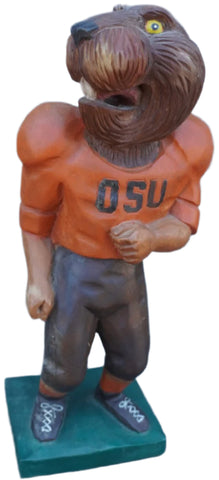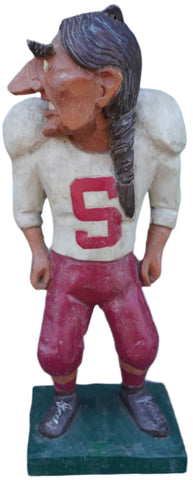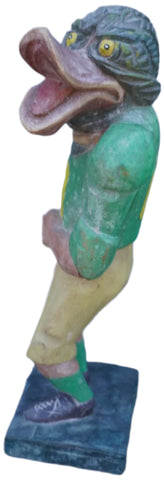Marion Kramer - Southern Pacific Roundhouse Oakland California - Oil on Canvas
Torn down in 1960, the Southern Pacific roundhouse, while it stood, was a testament to the power and reach of the railroads, and, with its demolition, ultimately, of their decline. This is a lovely work of outsider art, which we love for its power and honesty and intense engagement with its subject. We love its dense geometry and the play of the bricks' deep red.
Signed Marion Kramer. Unframed, measures 39 1/2" x 29 1/2", freshly cleaned and varnished.
And, because we're train geeks:
The engine roundhouse was the central focus of the West Oakland railroad yards and shops and provided jobs to generations of area residents. Steam locomotives were fairly individualized, custom-built machines, with few standardized parts. They required, consequently, the attention of master mechanics and custom parts fabrication by skilled machinists to keep them running. A roundhouse allowed locomotives to be driven onto a turntable and rotated, so that they could be run out on radial tracks into multiple covered work bays for maintenance and repairs. Each bay incorporated a pit between the rails so that mechanics could access the running gear. Some roundhouses actually were circular, or "round." Many, like the Oakland Point engine roundhouse, consisted of a turntable with tracks radiating to an arc (rather than a complete circle) of roofed bays, forming a shape like a pie slice.
The 1878 Thompson and West Historical Atlas Map shows only the original CPRR roundhouse (Thompson and West 1878). The 1911-1912 Sanborn insurance map shows three roundhouses: the original pie-shaped CPRR structure for servicing engines; a larger roundhouse a few hundred yards to the north, for the SPRR car shops; and a third roundhouse belonging to the Western Pacific Railroad to the south, near the foot of Adeline Street (Sanborn Map Company 1911-1912).
The decline of the railroads, as highway transport grew in the years after World War II, spelled the beginning of the end for the extensive West Oakland shops and yards. Most major railroads converted from steam power to new diesel locomotives with more mass-produced standardized parts between 1950 and 1956. Fewer shops, machinists, and mechanics were necessary to keep the trains running. By the late 1950's, the West Oakland yard operations had practically ceased. The obsolete engine roundhouse (and likely the car shop roundhouse, as well), no longer needed by the small crew of diesel mechanics, was torn down 1960. 1

